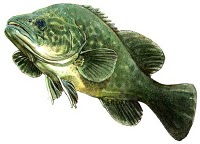We have a large variety of fish available…
The world’s oceans produce almost 3/4 of our oxygen. Our oceans influence weather systems, support economies and feed people around the world. Almost one billion people rely on fish as their primary source of protein, and fishing is the principal livelihood for over 200 million people around the globe.
Frydays is committed to responsible sourcing…
We realise, that with fish playing such an important role in so many people’s lives, it is imperative that the world’s oceans are managed correctly to ensure the survival of marine life and the human life it sustains. As consumers become more aware of environmental issues, we are stocking alternative varieties of fish and taking responsibility for ensuring a sustainable future for the fishing industry.
Haddock
Haddock is a cold-temperate migratory fish, found in inshore shallow waters in summer and in deep
Haddock from stocks in North East Arctic are at healthy and sustainable levels and are being fished sustainably. To help reduce the impact of fishing on fish stocks which are depleted the fishing industry is changing to line-caught fish, where available, which is a far better sustainable alternative water in winter. Smaller than cod, it can attain a length of 70-100cms and can live for more than 20 years.
Cod – Atlantic
To help reduce the impact of fishing on fish stocks where fishing mortality is high the industry are starting to choose line-caught methods.Cod is a cold-temperate bottom-dwelling species. Cod spawn in winter and spring from February to April. In the North Sea, cod mature at 4-5 years at a length of about 50cms and can live up to 60 years.
Plaice
Historically plaice was the most abundant flatfish in the Northwest Atlantic. Although slow-growing (fish do not reach 40 cm until nearly age 10) it can attain a typical length of about 70 cms and ages in excess of 20 years. Females grow faster and are larger than males. They also live longer.
Two sub species of this sedentary bottom dwelling flatfish are recognised, one in the Northwest Atlantic where it is known as American plaice, the other in the
Northeast Atlantic where it is known as long rough dab. Frydays do not order immature fish so they are allowed to grow into adults.
Rock / Bullhuss
Rock refers to either of two kinds of fish: The first, also called rock eel, flake, and huss in the UK, is any one of many species of small shark, including the spiny dogfish (Squalus acanthias) or the bull huss (Scyliorhinus stellaris).
Rock is consumed in many European countries and is often sold by fish and chip shops in the UK.
Skate
Skates are cartilaginous fish belonging to the family Rajidae in the superorder Batoidea of rays. There are more than 200 described species in 27 genera. There are two subfamilies, Rajinae hardnose skates) and Arhynchobatinae (softnose skates).
Skates have slow growth rates and, since they mature late, low reproductive rates. As a result skates are vulnerable to overfishing.
Pollock
Closely related to Coley, and the two are often confused. Whole fish range from 500g to 3kg. Pollock is a good tasting fish, and is popular in France where most UK landed Pollock are sold.
Tuna
Every menu should have fresh Tuna! With its firm, rich red meat, you could almost describe this as the ‘cow of the sea’ and like steak, is best seared on the outside, rare in the centre.
While available year round, Tuna can be harder to source in the summer, when the fish follow the monsoon season around the Pacific.
Salmon
Incredible to think that this was once a luxury fish only available to the wealthy. As wild Salmon stocks decrease, the development of farmed Salmon has not so much bridged the gap, more like blown it wide open, making it very affordable. Available from February through to August, they are firmer, have more flavour, and in short supply – which is all reflected in the price. Wild fish have been caught as large as 45kg, but are usually up to around 15kg. Farmed fish range from 2kg to 8kg.
The most popular portion is the suprême – with or without the skin, though steaks are also widely used and are good value.
Mackerel
A superb fish, great value, readily available and yet, amazingly underrated. Ranging in size from 200-800g, Mackerel has a bullet shaped body with silvery-blue skin with dark wavy stripes.
One of the richest sources of Omega-3, Mackerel has greyish flesh with a rich flavour.
Whitebait
Whitebait is a collective term for the immature fry of fish, typically between 25 and 50 millimetres (1 and 2 in) long. Such young fish often travel together in schools along coasts, and move into estuaries and sometimes up rivers.
Hake
Hake are members of the cod family and can be found at depths of over 1,000 metres. A total of 12 hake species are known in the family of Merlucciidae, and even though taste and texture can vary by species they all tend to have a milder taste, softer texture and smaller flake than cod.












